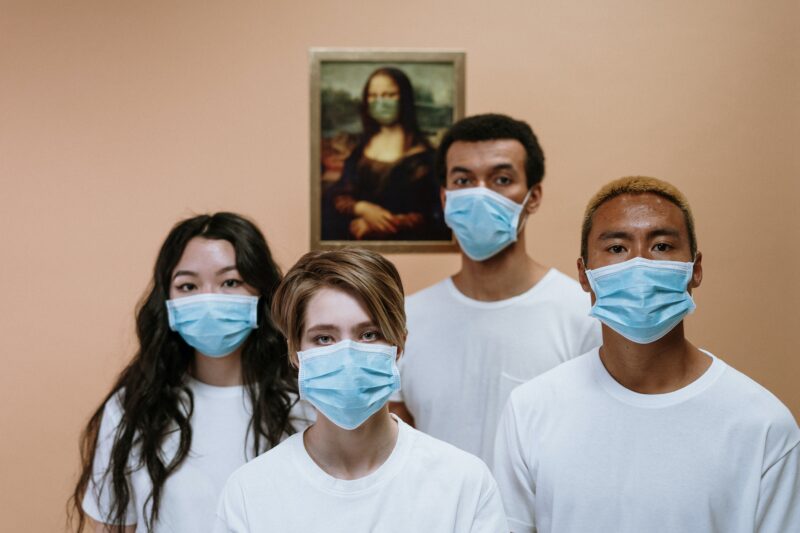Why is there a need to translate health resources information in Australia?
In 2021, 29.1% of Australia’s population were born overseas. This is a total of 7.5 million migrants. Having access to translated health information means addressing those Australians who speak a language other than English at home. More health-informed Australians directly translates to better health prevention outcomes and a happier and healthier population.
What languages are the most frequently requested for NAATI translation of health information?
The top languages that we provide NAATI translation for are Chinese (Simplified and Traditional), Arabic, Vietnamese, Greek, Italian, Hindi, Punjabi, Tamil, Spanish and Filipino.
What are the biggest challenges in getting high quality translations and how do you overcome these challenges?
Every project is unique, and we are always learning and evolving. The key is to stay dynamic and think outside of the box. But if we were to pinpoint the most recurring challenge that we face when providing NAATI translation in health settings, it would be getting the English text right. So often we come across English resources that are not optimised for translation. This might be because:
- the language is not simple enough (think plain language!)
- the content hasn’t been specifically adapted to the community groups we are translating for, or
- it’s not culturally appropriate.
Sometimes organisations don’t have the flexibility, because of budget, time, or approval process to optimise the text prior to translation, and this can reflect poorly in translation outcomes. In this instance, being able to deliver high quality translations requires us to provide a lot of guidance to our translators and tightly manage the community checking process.
Ensuring we identify issues early on can also be a challenge. Our objective with the early stages of the community translation process is to flag all the potential issues that might happen and address them before we translate. For example, we know that end of life is a culturally sensitive topic, so we’d always try to culturally adapt the English text for each community group before we translate. That way we make sure that the translations will be culturally appropriate.
What was important to consider when translating the CarerHelp information – particularly with the topic around end of life?
We knew it was important to consider that end of life is a very culturally sensitive topic. Being able to provide respectful translations was our focus. Not only respectful to each cultural group, but also to the individuals within those groups. A lot of extra work went into the briefing process to make sure all our translators and community checkers understood that.
Best Practices for Ensuring Accuracy and Quality in Health Resource Translation
Ensuring accuracy and quality in health resource translation is essential to effectively communicate important healthcare information to diverse populations. Here are some best practices to follow:
- Professional Translation Services: Engage professional translators who specialize in medical and healthcare translations. They possess the necessary language proficiency, subject matter expertise, and cultural understanding to accurately translate health resources.
- Native Speakers and Subject Matter Experts: Assign native speakers of the target language who are also subject matter experts in healthcare to work on the translation. This ensures linguistic accuracy and an understanding of medical terminology, ensuring the translated content is clear and precise.
- Translation Review and Editing: Implement a robust review and editing process to identify and correct any errors or inaccuracies in the translated material. Have a second translator or editor review the translated content for quality assurance.
- Cultural Adaptation: Consider cultural nuances, beliefs, and sensitivities when translating health resources. Adapt the content to be culturally appropriate and relevant to the target audience, ensuring it resonates with their values and practices.
- Plain Language and Clarity: Use plain language techniques to simplify complex medical concepts and terminology. Ensure that the translated content is clear, concise, and easy to understand for the intended audience, regardless of their language proficiency.
- Consistency and Terminology Management: Maintain consistency in terminology throughout the translation to avoid confusion. Establish a terminology management system that includes glossaries and style guides to ensure consistent use of medical terms across different resources.
- Contextual Understanding: Gain a thorough understanding of the purpose and context of the health resource being translated. Consider the target audience, their needs, and the intended outcomes to accurately convey the information.
- Collaboration with Stakeholders: Collaborate with healthcare professionals, community leaders, and members of the target population during the translation process. Seek their input and feedback to ensure the translated content aligns with their specific needs and cultural expectations.
- Community Review: Engage community members who represent the target audience to review the translated content for linguistic and cultural accuracy. Their insights and feedback can greatly enhance the quality of the translation.
- Ongoing Evaluation: Continuously evaluate the effectiveness and impact of the translated health resources. Collect feedback from users, conduct surveys or interviews, and assess whether the translated materials are achieving their intended objectives.
By following these best practices, healthcare organizations can ensure accurate, culturally sensitive, and high-quality translations of health resources, leading to improved health literacy, better patient outcomes, and enhanced communication with diverse populations.
What are your tips for people who want to get health resources information translated?
My number one piece of advice is always understand the communities that you are translating for. But what does that look like? It means doing the legwork before you start the translation process; how does each community group like to receive information? What information do they actually need? Is the existing resource fit for translation? For example, is the text respectful? Are images culturally diverse? Is the text easy to understand?
Translating health resources information is not just about translating words. There are so many established beliefs, customs, attitudes and practices that people bring with them from their countries of origin… that you really need to understand these before effective translating can start.
Adapted with kind permission from CarerHelp.
Related Posts

Get a quote today
"*" indicates required fields
Subscribe today to receive the latest insights and updates from Sylaba Translations









